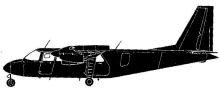Incident Overview

Description
Shortly after takeoff, the aircraft, which was climbing at approximately 500 feet above sea level, pitched up suddenly and became unstable when the flaps were retracted while entering the cloud layer. The pilot-in-command pushed the control column down to level the aircraft. After deciding that the aircraft could not safely continue the flight, he began turning left to return to Baie-Comeau. While turning, the aircraft rolled rapidly to the left and began to dive. The aircraft crashed into the St. Lawrence River. FINDINGS AS TO CAUSES AND CONTRIBUTING FACTORS: 1. The aircraft took off with contaminated surfaces, without an inspection by the pilot-in-command. This contamination contributed to reducing the aircraft’s performance and to the subsequent stall. 2. At take-off, the aircraft was more than 200 pounds over the maximum allowable take-off weight. This added weight contributed to reducing the aircraft’s performance. 3. During the initial climbout, the pilot-in-command did not follow the recommended procedure when he entered an area of wind shear. Consequently, the aircraft lost more speed, contributing to the stall. 4. Insufficient altitude was available for the pilot to recover from the stall and avoid striking the water. 5. The co-pilot’s shoulder harness was not installed properly. The co-pilot received serious head injuries because she was not restrained.
Primary Cause
Contaminated surfaces and exceeding maximum takeoff weight.Contaminated surfaces and exceeding maximum takeoff weight.Share on:





